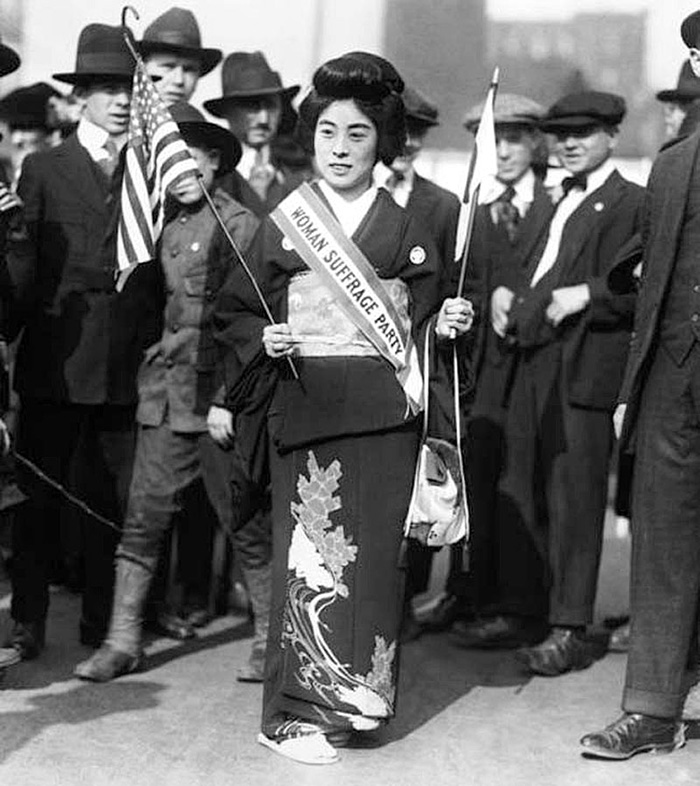Asian American Suffrage
Page Content
 Komako Kimura, a prominent Japanese suffragist, marches in New York on October 23, 1917. (Courtesy of Wikimedia Commons)
Komako Kimura, a prominent Japanese suffragist, marches in New York on October 23, 1917. (Courtesy of Wikimedia Commons)
By the late 19th century, western states like Oregon had many residents from the Philippines, Korea, Japan, China, and other Asian nations. For much of American history, however, Asian immigrants and their descendants were denied citizenship and voting rights by law. Fears rooted in racist beliefs among white Americans that immigrants from Asia would undermine the economy and threaten racial homogeny culminated in the 1882 Chinese Exclusion Act and 1924 Immigration Act. These laws limited entry of nearly everyone from Asia into the U.S. and banned their naturalization.
The 14th and 15th Amendments opened voting rights to all native-born American men regardless of race. Asian American communities were still restricted from suffrage through literacy tests, property restrictions, and voter intimidation. It was not until 1943 and the passage of the Magnuson Act that Chinese immigrants could begin naturalizing as U.S. citizens. Truly broad access to American citizenship and voting rights was not available to Asians and Asian Americans until the Immigration and Nationality Acts of 1952 and 1965. These acts removed race as a barrier to immigration and citizenship, effectively ending two centuries of restrictions and legal disenfranchisement.